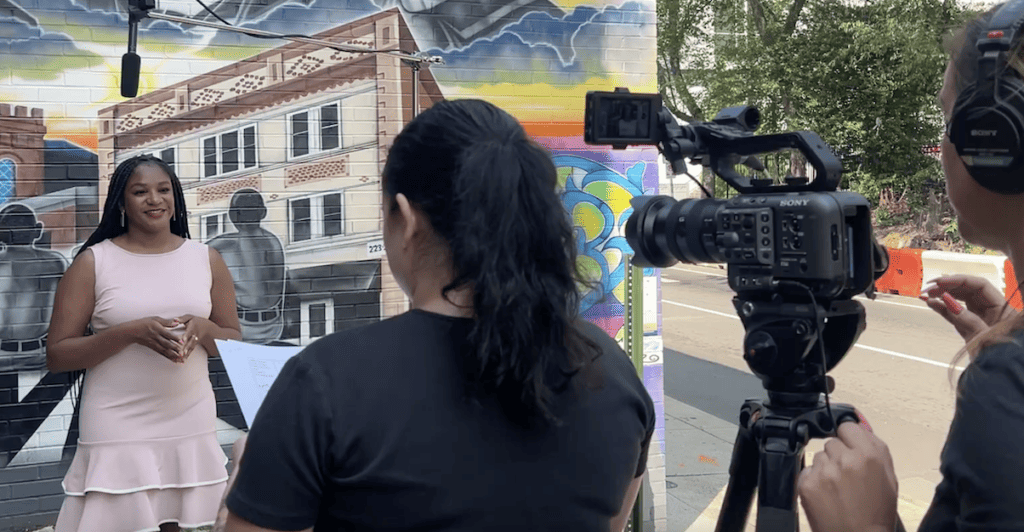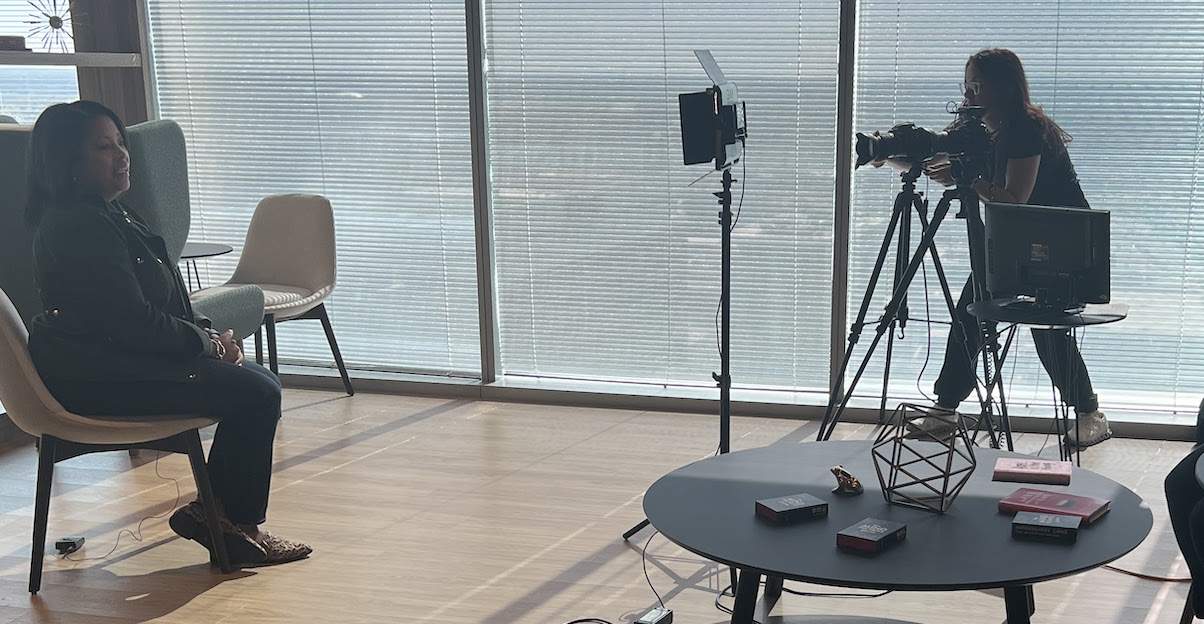In the corporate world, effective communication is the key to success but even more so when you’re dealing with the fast-paced world of media. From when I first opened my TV studio in Charlotte to today, the news cycle has shrunk from a 30-day turnaround to a 24-hour turnaround time. And TikTok videos turn into news stories within four days. Meaning, news that happens in Charlotte can go national very quickly. Leaders need to think fast and talk smart because national news organizations come in like a whirlwind.
Whether you’re responding to a national new media query, presenting a business proposal, leading a team meeting, or talking with colleagues, your ability to think fast and have depth to what you say can significantly impact your professional growth. Over the years, I’ve coached many corporate leaders on communication tips specifically tailored for media requests which ended up being really beneficial in the boardroom and through their professional journey. It’s important you are able to speak, with examples and stories, and with confidence and vulnerability.
Understanding the the Steps of Effective Communication
Specific strategies are helpful in effective communications and they build on each other. You will be stronger in some areas than others. Sunshine Media Network clients learn to identify where they need more support so they can focus on that area and improve.
Being clear is a rather unique skill in corporate spaces. Anyone following the “Corporate Erin” videos on TikTok immediately knows what I’m talking about. That circular, gentle, vague language that has become synonymous with corporate speak is what you want to avoid.
Effective and clear communication fosters a healthy work environment by promoting transparency and mutual understanding among team members. Journalists also appreciate transparency and that sensibility builds relationships with the media which can make it easier for you down the road when you want media exposure or need a media ally.
Clarity enhances productivity and clear instructions and feedback streamline operations and minimize errors. When people know what you mean when you say something, there’s less room for error. More importantly, when you are clear and effective in interviews, your words cannot be used against you. Perhaps most importantly, clarity and effectiveness boosts your personal brand within the company, making you stand out as a reliable leader and team player. When producers, reporters, and freelance writers know you’re dependable, to the point, and clear they will seek you out for interview opportunities.
Techniques that help you think fast and talk smart in any corporate, media, or public setting require preparation, consistency and practice.
Here are tips to break it down into digestible skills
1. Active Listening: The First Step Towards Effective Communication
One of the most overlooked yet essential corporate communication tips is active listening. Perhaps it’s so uncommon because people in the corporate world are used to being in charge which requires a lot of speaking and leading. But active listening involves fully focusing on the speaker, understanding their message, responding thoughtfully, and remembering key points from the conversation. A common technique to practice active listening is clarifying what the speaker just said. Restating what you heard, asking clarifying questions, and eye contact reinforce active listening skills. By practicing active listening, you show respect for your colleagues’ ideas while also gaining valuable insights that can enhance your decision-making skills. When active listening is applied to members of the media, they feel you’re being genuine and you don’t risk answering the wrong question.
2. Clarity and Conciseness: The Art of Being Brief yet Comprehensive
They say time is money and in the business world the eight hour work day flies by. It’s valuable to be brief and concise without being curt or short. Being able to convey your thoughts clearly and concisely is an invaluable skill. The famous quote always comes to mind “If I was a better writer, I would have written a shorter book.” Practicing your conversations before they occur helps you get extra words out of your head and speak concisely. Reporters interview someone for 30 minutes for only 1-minute of content because people get more concise the more they say their answer. Reflecting on conversations and what information you consistently fail to communicate can help you identify places you need to lean in and share more. Don’t assume everyone knows what you know. Avoid using jargon or complex language that might confuse your listeners. Your internal team may know commonly used verbiage but contractors and new team members may not and worse- they may not ask for clarification. The media is notorious for not asking clarifying questions that may make them look uninformed or less intelligent. Use simple words and short sentences to express your ideas effectively. Remember – less is more when it comes to efficient corporate communication.
3. Non-Verbal Communication: Speaking Without Words
We are all reading your body language when you’re speaking. Body language and facial expressions are so important that many phone calls and emails are traded in for video calls and in-person meetings because energy and body language speak volumes. Non-verbal communication, including facial expressions, body language, and gestures, convey your thoughts and feelings. Maintaining eye contact can show confidence and sincerity, while a firm handshake can convey professionalism.
Be mindful how non-verbal cues cross over into cultural norms and mores and it’s important you consider the comfortability of your audience if you want to be effective in your communications. A firm handshake with a woman may be communicated as a form of unnecessary male ego if it’s a space women aren’t usually welcome.
If you are confident in what you’re speaking about it should be felt by those you are speaking to. Media Training is a beneficial tool in the non-verbal communication space. Sometimes anxiety on-camera is perceived as being disingenuous or misleading and sends the wrong message.
4. Embrace Technology: Leverage Digital Communication Tools
In the digital age, mastering online communication tools is a must for every corporate professional. Whether it’s video conferencing platforms like Zoom or collaboration tools like Slack, being proficient in these technologies can enhance your communication efficiency and effectiveness. Remember to maintain the same level of professionalism in your digital communications as you would in face-to-face interactions.
Choose the right digital medium for your communications. And the age of your intended audience can be important to consider also. Many Gen X and younger prefer email or written communications over a phone call. But Gen X prefers a phone call over a lengthy back and forth process like a decision. Virtual meetings are being favored by many demographics in the workforce for sheer ease. Remember, not everyone wants to be on camera for those meetings so communicate ahead of time expectations and policies.
5. Feedback: A Two-Way Street
Effective communication is not just about conveying your thoughts but also about welcoming feedback from others. Encourage open dialogue and be receptive to constructive criticism. This not only helps you improve but also fosters a culture of mutual respect and collaboration within the team.
If you’re practicing active listening, you have a good head start on effective communications. But when you know the audience and have a sense of their perspectives, you develop a business shorthand. Even when I took comedy improv classes, we were encouraged to spend time bowling or eating dinner or at another group event so we got comfortable with each other’s personalities and expectations. When you develop a communication shorthand with your team, you can say less while losing less in translation.
Conclusion: Practice Makes Perfect
Mastering the art of corporate communication doesn’t happen overnight – it requires consistent practice and learning from past experiences. You have to be able to identify where you need to grow. Much like a professional athlete, it’s an ongoing process of fine tuning and improving. With new team members, partners, new media opportunities, there are always chances to learn.
Start by implementing these corporate communication tips in your daily interactions and gradually refine your skills over time.
Remember – effective communication is not just about thinking fast and talking smart; it’s also about listening attentively, expressing empathy, and building strong relationships based on trust and respect. So go ahead – take the first step towards becoming a more effective communicator, and contact us today!
NASCAR Hall of Famer Bobby Labonte is a professional communicator in addition to his being a professional driver. Sunshine Media Network works on Communications Strategy and speech writing and delivery with Labonte as clear and concise communications are vital in healthy careers for pro athletes.
https://bobbylabonte.com/

Christine Edwards founder and Principal Consultant of Civility Localized works with Sunshine Media Network on a video shoot where concise and effective communication is vital. In a video message, every word counts and audiences only watch content that is constantly engaging and teaching them something new.
https://www.civilitylocalized.com/



